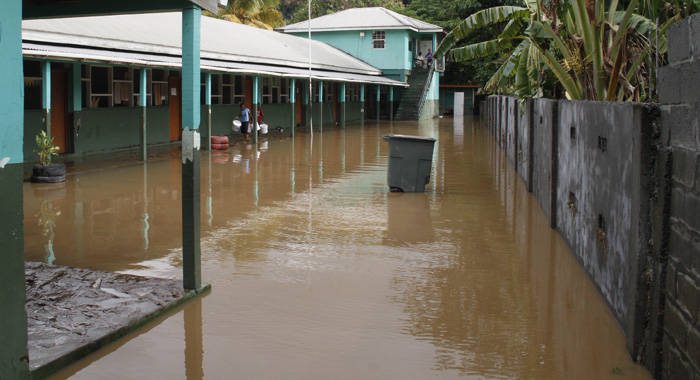By Kenton X. Chance
A regional climatologist is predicting above normal activity this hurricane season, which he says will be a blessing to countries that have been experiencing very long drought, but is also warning of the dangers associated with heavy rainfall.
“What we are basically forecasting is that the hurricane numbers might be slightly above what we usually get,” said Cédric Van Meerbeeck, climatologist at the Barbados-based Caribbean Institute for Meteorology and Hydrology (CIMH).
He told the Caribbean Media Corporation (CMC) on Wednesday that while the region usually gets about 12 tropical cyclone annually, this year could see as many as 17 storms affecting the Atlantic basin.
Speaking on the side-lines of the annual Wet/Hurricane Season Caribbean Climate Outlook Forum here, Van Meerbeeck said that the United States National Oceanic and Atmospheric Administration, has predicted 11 to 17 named storms — between four and seven of which are likely to become hurricanes.
Of the hurricanes that might develop, up to three might become severe hurricanes — categories 3 to 5 throughout the Atlantic basin, Van Meerbeeck said.
“That doesn’t mean that we are going to get all of them coming through the Caribbean and it doesn’t even mean that those ranges are correct,” he said, adding that forecasters are about 70 per cent certain that there will be 11 to 17 named storms this year.
“It is still possible that it will be above, it is still possible that it will be below, but history has taught us that in most of the cases, it is within that range.”
Van Meerbeeck said that slow-moving storms are the most dangerous, especially in countries that flood easily.

He noted that there was severe flooding in southern Jamaica in mid-May because the nation was subject to extreme wet spells.
“And because it is already flooded, any additional rainfall will likely add on to the impact there,” Van Meerbeeck told CMC, adding that Jamaica will get some respite in July.
“So up until the end of June, they need to be very vigilant there,” he said, noting that after June, the heat will become a concern Caribbean-wide.
“We are not very accustomed to thinking that heat is a problem in the Caribbean,” he said, adding that this is so because the region lacks the medical data.
“But, when we talk to health practitioners, they have a very strong sense that there is more disease when people are exposed to too much heat, especially if they are already vulnerable because they have some chronic disease. They cannot cool themselves down so easily, etc.
“So heat is going to be challenge in the coming months with the possibility of quite a few heat waves, especially between August and October across the region,” Van Meerbeeck said.
The climatologist said that the Leeward Islands, which have been battling with chronic lower-than-average rainfall, can expect some respite this wet season.
“They might finally be coming out of a very long-term drought,” he said, adding that up until recently, Antigua had been in a three-year drought.
“Now, little by little, any drop counts, and there will be many drops in the wet seasons, or, at least, that is what the forecast suggest right now.”
Van Meerbeeck urged residents to keep up to date on the drought updates from their local met service or CIMH, adding that right now there are no drought concerns anywhere in the region for the next couple of months.
He, however, warned of the possibility of El Niño, a climate cycle in the Pacific Ocean with a global impact on weather patterns, including in the Caribbean.
“We are not there will be an El Niño. There is a 50-50 chance right now. It if does [develop], then there is a possibility that going into the wet season we will see dryness coming up again with a chance of drought impacting the region again during the dry season next year.”
Van Meerbeeck said while this is further down the road, Caribbean residents should keep updated because of the possibility of El Niño.
The forecaster said that countries that have been dry for a very long time should be especially vigilant with above average rainfall in the forecast.
“If it has been dry for a very long time, what happens is that the surface of the ground cannot really have water infiltrating into it. So, a dry surface, just like a place that has already been flooded, very little water can penetrate too,” Van Meerbeeck said.
He said the chance of flash flooding after the first heavy rains is greater especially if there is a lot of concrete and not much vegetation and very hilly terrain
“So that would have been a problem that has occurred in some areas this year, but especially after the end of every major drought that ended last year in many places.
“So, we are not expecting that to be a major cause for concern at this time, but, again, keep up to date, check the weather report because anytime that heavy rainfall is forecast, you need to be prepared, especially if it has been very dry or especially if it has been very wet before, because both can lead to flooding,” Van Meerbeeck told CMC.






